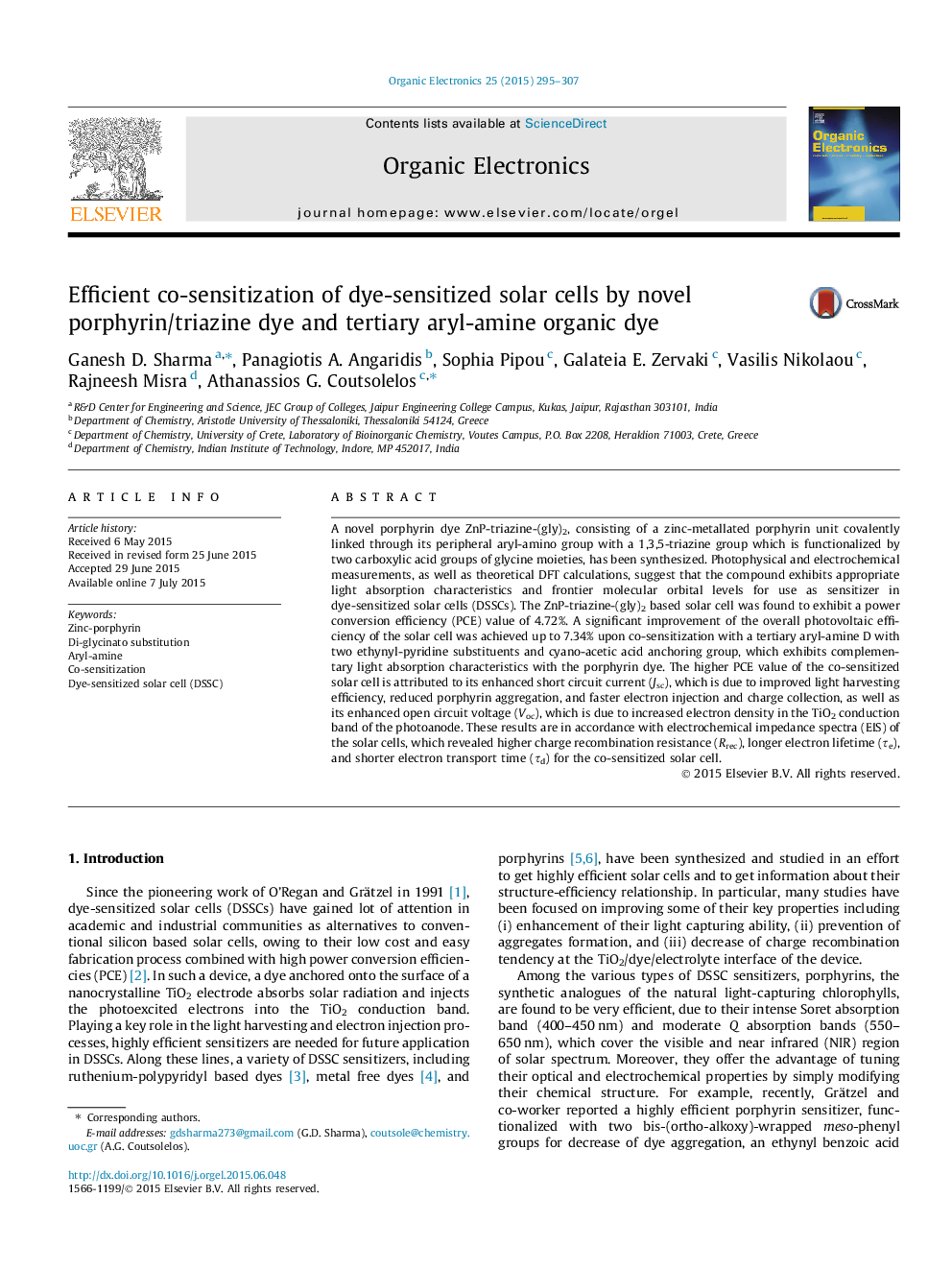| کد مقاله | کد نشریه | سال انتشار | مقاله انگلیسی | نسخه تمام متن |
|---|---|---|---|---|
| 1263655 | 1496832 | 2015 | 13 صفحه PDF | دانلود رایگان |
• A porphyrin/triazine dye with two carboxylic acid anchoring groups is presented.
• A D-A tertiary aryl-amine dye with ethynyl-pyridine subsituents is presented.
• Co-sensitization of a DSSC with the two dyes results in a high PCE of 7.34%.
• DSSC shows high light-harvesting efficiency, and low charge recombination and dye-aggregation.
A novel porphyrin dye ZnP-triazine-(gly)2, consisting of a zinc-metallated porphyrin unit covalently linked through its peripheral aryl-amino group with a 1,3,5-triazine group which is functionalized by two carboxylic acid groups of glycine moieties, has been synthesized. Photophysical and electrochemical measurements, as well as theoretical DFT calculations, suggest that the compound exhibits appropriate light absorption characteristics and frontier molecular orbital levels for use as sensitizer in dye-sensitized solar cells (DSSCs). The ZnP-triazine-(gly)2 based solar cell was found to exhibit a power conversion efficiency (PCE) value of 4.72%. A significant improvement of the overall photovoltaic efficiency of the solar cell was achieved up to 7.34% upon co-sensitization with a tertiary aryl-amine D with two ethynyl-pyridine substituents and cyano-acetic acid anchoring group, which exhibits complementary light absorption characteristics with the porphyrin dye. The higher PCE value of the co-sensitized solar cell is attributed to its enhanced short circuit current (Jsc), which is due to improved light harvesting efficiency, reduced porphyrin aggregation, and faster electron injection and charge collection, as well as its enhanced open circuit voltage (Voc), which is due to increased electron density in the TiO2 conduction band of the photoanode. These results are in accordance with electrochemical impedance spectra (EIS) of the solar cells, which revealed higher charge recombination resistance (Rrec), longer electron lifetime (τe), and shorter electron transport time (τd) for the co-sensitized solar cell.
Co-sensitization of a zinc-porphyrin/triazine dye bearing carboxylic acid anchoring groups with a donor–acceptor tertiary aryl-amine dye with two ethynyl-pyridine substituents and a cyano-acetic anchoring group significantly improves the efficiency of the dye-sensitized solar cell. This is attributed to improved light harvesting efficiency, due to complementary light absorption characteristics of the two dyes, reduced dye aggregation, fast electron injection and charge collection, and increased electron density in the TiO2 conduction band, as a result of reduced charge recombination.Figure optionsDownload as PowerPoint slide
Journal: Organic Electronics - Volume 25, October 2015, Pages 295–307
